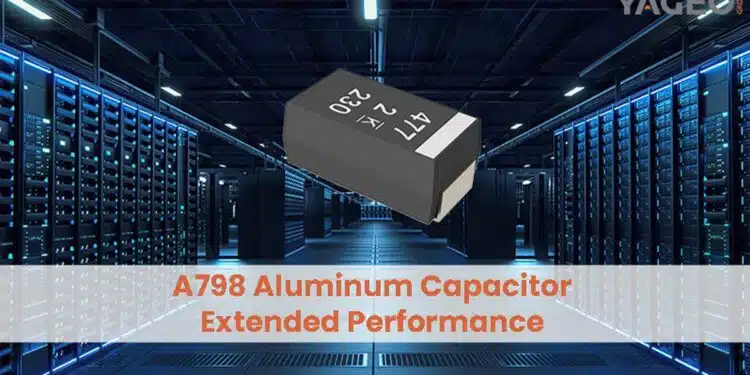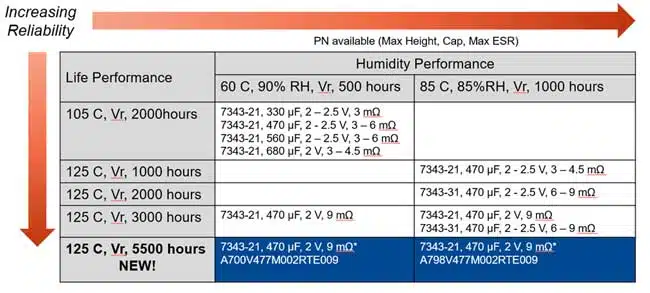KEMET, YAGEO Group unveils A798 Plus Performance AO-CAP® aluminum polymer SMD chip capacitors with extended lifetime capabilities.
KEMET, YAGEO group announces the launch of the A798 Plus Performance Aluminum Organic Capacitor (AO-CAP®), a groundbreaking solid-state aluminum capacitor engineered for extended operational lifespans and unmatched reliability.
The A798 Plus Performance AO-CAP® features an advanced construction with stacked aluminum elements, incorporating a solid conductive organic polymer cathode. This innovative design ensures exceptionally low Equivalent Series Resistance (ESR) and superior capacitance retention even at high frequencies.
Key highlights of the A798 Plus Performance AO-CAP® include:
- Extended Operational Lifetime: Thanks to the absence of liquid electrolytes and material upgrades, the capacitor offers prolonged durability with enhanced life endurance up to 5500 hours at 125ºC rated voltage.
- Superior Thermal Endurance: Storage endurance is expanded to 125ºC while maintaining robust humidity bias capabilities at 85ºC/85% RH/Ur for up to 1000 hours.
- High Reliability under Stress: The low-stress interface between the dielectric and polymer counter electrode allows the AO-CAP® to operate at steady-state voltages up to 100% of its rated voltage without derating.
Designed specifically for low-voltage power rails in DC/DC converters, servers, telecommunications, displays, and industrial applications, the A798 Plus Performance AO-CAP® is set to redefine industry standards for capacitor longevity and efficiency.
Conclusions
The new A798 Plus Performance AO-CAP ® brings the Polymer Aluminum capability to extreme extended lifespan application conditions.
































